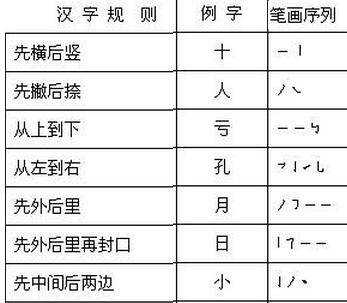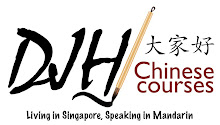In respond to the speech made by Ms Yumi Kitahama (a career consultant with years of experience in Singapore and Japan) during the #30 Networking Event, that language skill is one of the top important skills both for employment and business in today’s highly globalized world, We Are One is going to initiate the Café Workshop & Seminar Series with Chinese language lessons for all.
Concept:
Language Courses
1 Learn Chinese (Newbie Level) in English & Japanese
Café setting
1 Relax atmosphere for enjoying the lesson after a day’s work
2 Complimentary drink (Hot: Cold: Ice coffee, Ice tea, Ice lemon tea etc)
Lesson content
1 Focus on useful daily conversation that native English/ Chinese/ Japanese speakers use, including slangs.
2 Application in all situations such as travel, business, daily life etc.
3 Covering topics such as newest trend, technology, traditional & pop culture, global issues which are up-to-date and interesting, enable students to gain additional knowledge besides the language.
4 Student participation during lesson to enhance effective learning.
5 Materials are free of charge, including notes, MP3 files, recommendation to online materials etc.
Lesson Format
1. Students only pay for each lesson that they attend at the beginning of the lesson and also receive material for the day. No registration fee, no advance payment, no hidden cost.
2. It is perfectly ok to miss some classes if you are busy are work. You can always check with your classmates on what you have missed out.
Venue:
Zen Café (besides Backpackers Hostel K's House Kyoto)
418 Nayacho, Shichijo-agaru, Dotemachi-dori, Shimogyo-ku,
Kyoto city, Japan 600-8142
TEL +(81)-75-342-2444 FAX +(81)-75-342-2440
It is about 10 mins walk from JR Kyoto Station
Fee:
1500yen (includes 1 drink)
Date & Time:
Every Wednesday 8pm to 9pm starting from 20th Oct 2010
Registration:
Please send the following to
we.are.one.japan@gmail.com
- Name
- Nationality
- Proficiency level (newbie, elementary, intermediate, upper-intermediate, advance)
- Contact number & mobile email address
- Choice of drink (coffee, tea, lemon tea, softdrinks, hot or cold)
About the Instructor
Tong (Chinese)
Tong is a Singaporean Chinese whose native languages are English, Mandarin and Cantonese. He runs Chinese courses (www.djhchinese.com) in Singapore. He has been teaching English and Mandarin for the past 7 years in both Singapore and Japan. His students include expatriates from all over the world as well as Japanese. He is experienced in teaching adults to help them achieve their various language objectives such as for work and business. He is also passionate in teaching young children, allowing them to enjoy lessons in a fun filled setting while setting a strong foundation for the language. Tong considers himself a cosmopolitan as he has obtained his JLPT 1 10 years ago in high school and attained intermediate level French after studying in France for over half a year. Tong is also the Program Director of We Are One International, a volunteer group that connects international-mined people in Kansai by organizing various events and activities every month.
コンセプト
語学コース
- 英語,日本語で習う初心者の中国語
カフェで
- お仕事の後、リラックスした空間で楽しくレッスンを行います
- 1ドリンク付き
授業の内容
- 日常会話に焦点を当てネイティブスピーカーが使うスラングを含む中国語のレッスン
- 旅行やビジネスなどのシチュエーションに合わせて使えるレッスン
- 最新のニュースやテクノロジー、文化や国際問題などの興味あるトピックを用 い、語学に加えて使える知識も共に学べるレッスン
- 生徒参加型の積極的なレッスン
- 授業に使うノートやMP3ファイル、オンラインの教材は授業料に含まれます
レッスンについて
- 授業料につきましては、それぞれ授業に来ていただき、授業が始まる前にお支払い頂きます。その際に、その日の分の教材をお渡しいたします。前払い、予約手数料、キャンセル料はいただきません。
- もし忙しければ授業を休んでいただいても構いません。いつでもクラスメイト方とどの授業を逃したか確認することができます。
Venue:
Zen Café
〒600-8142 京都市下京区土手町通七条上る納屋町418
TEL 075-342-2444 FAX 075-342-2440
JR京都駅からの道順
1) JR京都駅の中央口より、烏丸通(京都タワー沿いの通)を北へお進み頂きます。
2) 次の大きな交差点の信号を渡ってから右折します。
3) そのまま七条通を東へ5~6分位進んで頂きます。
4) 河原町通との交差点を渡って次の通(北への一方通行)を左折します。
5) 50m先右側にある白い6階建ての建物が当ホステルです。
Date & Time:
10月20日から毎週水曜日 8pm to 9pm
- 名前
- 国籍
- 連絡先、メールアドレス
- ドリンクの選択 (coffee, tea, lemon tea, softdrinks, hot or cold)
講師について
Tong (唐、トン)中国語
中国系シンガポール人。母語は英語、北京語、広東語の3つ。過去7年間シンガポールと日本で英語、北京語を教える。今までの教えてきた生徒は1つの国にとどまらず、世界各地から来た人達と様々である。教えてきた生徒には大人が多く、彼らの仕事やビジネスに必要な語学力を高めるために貢献してきた。また子供の生徒に教えることも積極的で、子供の時期に重要な語学の基礎を築くためにも楽しさあふれるレッスンを行ってきた。彼は10年前、高校生の時に日本語検定1級を取得、また約半年フランスで勉強した後、中級レベルのフランス語も習得と国際的である。最近ではWe Are One Internationalという、国際的なマインドを持つ関西に住む人々をつなぐために様々なイベントや活動を毎月行う、ボランティアグループのプログラムディレクターとしても活動している。























